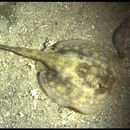en
names in breadcrumbs


Stingrays are related to sharks (some folks call them “flattened sharks”), unfortunately while sharks may be family, they are also the biggest predators of stingrays.Stingrays often take on the color of their environment for defense.Stingrays spend a lot of time motionless, partially buried under sand.Stingrays are usually docile and harmless, though they will use their barbed tails in defense (usually if they are stepped on).Stingrays may be as small as a few inches or up to 5 to 7 feet long,Stingrays have no bones, they are primarily made of cartilage.Stingrays are carnivores, hunting their prey (small fish, crabs, shrimp) at night.Stingrays use their sense of smell and special electro-receptors to hunt their prey.Stingrays have a lifespan of 15 to 25 years.

Myliobatiformes (/mɪliˈɒbətɪfɔːrmiːz/) is one of the four orders of batoids, cartilaginous fishes related to sharks.[4][5] They were formerly included in the order Rajiformes, but more recent phylogenetic studies have shown the myliobatiforms to be a monophyletic group, and its more derived members evolved their highly flattened shapes independently of the skates.[6][7]
Nelson's Fishes of the World arranges the Myliobatiformes as:[8][9]
The family Aetobatidae is recognised by some authorities. It contains the genus Aetobatus, which is otherwise part of Myliobatinae. [11][10]
 Camouflaged porcupine ray
Camouflaged porcupine ray Myliobatiformes (/mɪliˈɒbətɪfɔːrmiːz/) is one of the four orders of batoids, cartilaginous fishes related to sharks. They were formerly included in the order Rajiformes, but more recent phylogenetic studies have shown the myliobatiforms to be a monophyletic group, and its more derived members evolved their highly flattened shapes independently of the skates.